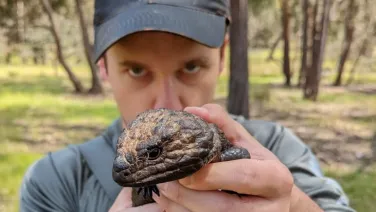E&E PhD Exit Seminar: Linking Ecology and Evolution to understand diversification in diverse Tropical Savannas
What promotes biological diversity? Accurately recognising and describing patterns of diversity is fundamental to understanding the evolutionary and ecological processes underpinning diversification.
Speakers
Event series
Content navigation
Description

What promotes biological diversity? Accurately recognising and describing patterns of diversity is fundamental to understanding the evolutionary and ecological processes underpinning diversification. While traditional community ecology posits that biodiversity is a result of biotic interactions at small scale and over a short period of time, evolutionary biologists and biogeographers consider that evolutionary diversity is the big driver, over long periods of time and a bigger (regional or continental) spatial scales. However, the integration of both approaches is necessary to answer many of the most interesting and important questions. The central aim of this project is to investigate what are the principal factors that shape the adaptation and diversification of lizards in savanna ecosystems, focusing on South America and Australia. These are highly heterogeneous habitats with independent evolutionary radiations; yet, because of the similarity of the habitat and climatic histories I expect to identify common processes underpinning the high diversity of those regions. I compared structuring and evolution of morphological and phylogeographic diversity across the two systems. Additionally, for the AMT I apply landscape genetics methods across taxa to explore how dispersal limitation and landscape features lead to contrasting scales of genetic structuring within species and in this talk I will present the key outcomes, discussing convergence patterns, key areas for the past and future maintenance of biodiversity and exploring predictors of phylogeographic structure on co-distributed taxa.
Location
Eucalyptus Seminar Room, Rm S205, Level 2, RN Robertson Building (46)


